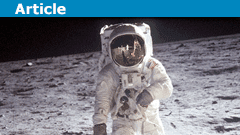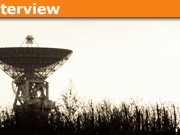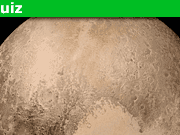The Last Man On The Moon | A Look Back at Previous Missions
On 11th December 1972, just over 45 years ago, man set foot on the moon for the last time.
The Apollo 17 mission manned by Eugene Cernan and geologist Harrison Schmitt was the last in the program, marking the end of, quite possibly, the most important era in space exploration.
The Apollo program began in 1969 after President John F. Kennedy expressed a desire for a manned moon mission by the end of the decade.
On 16th July 1969, Apollo 11 took off with Neil Armstrong, Edwin (Buzz) Aldrin, and Michael Collins aboard. While Collins remained in orbit, Armstrong and Aldrin transferred to the Lunar Module and descended to the moon’s surface, becoming the first men to set foot on the moon.
A lot of important work was carried out on this first mission, such as a solar wind experiment to measure the wind from the Sun, a laser-beam reflector to measure the exact Earth-Moon distance, and a seismic experiment package to record ‘moonquakes’. In addition, 47 lb of soil samples were collected.
Millions watched live as the American flag was erected and the astronauts walked on the surface of the moon. The crew returned to Earth on 24th July 1969, landing in the Pacific Ocean near Hawaii.
Only four months later on 14th November 1969, Apollo 12 was launched with astronauts Pete Conrad, Richard Gordon, and Alan Bean. While Gordon stayed in orbit, Conrad and Bean landed on the moon just 600 feet from where Surveyor 3, a previous unmanned probe, had landed two years before. Bean and Conrad removed pieces of Surveyor 3 for later analysis on Earth.
The surrounding area was explored and more experiments were set up. Gordon and Bean also collected more rock and soil samples before returning to Earth on 24th November.
Apollo 12 demonstrated improvements in the accuracy of the landing guidance of the spacecraft, so Apollo 13 was intended to land on more rugged terrain than the previous vessels.
Apollo 13 was launched on 11th April 1970 with Lovell, Fred Haise, and John Suigert. Unfortunately, an oxygen tank ruptured, so landing on the moon had to be canceled. The power and survival systems of the Lunar Module were used to swing behind the moon and return to Earth four days after take-off.
The Americans waited nine months before launching Apollo 14. Modifications had been carried out to the spacecraft to prevent a recurrence of the previous malfunction.
Captain Shepard and Commander Edgar Mitchell landed the Lunar Module in the rugged Fra Mauro region of the moon, while Stuart Roosa remained in lunar orbit in the Command Module.
Shepard and Mitchell spent nine hours exploring an area containing some of the oldest rocks that had yet been recovered. They collected 96 lbs of geological samples and deployed scientific instruments. They returned to Earth on 9th February 1971.
On 26th July 1971, Apollo 15 was launched, manned by Colonel Scott, James Irwin, and Alfred Worden. Scott and Irwin spent nearly three days on the lunar surface near the Apennine mountain range, which is one of the highest on the moon.
They deployed more scientific instruments and collected 200 lbs of rock, including a crystalline piece of the original lunar crust, which was about 4.6 billion years old.
They left a television camera on the surface to record their departure. Before leaving orbit a satellite was launched to transmit data about gravitational, magnetic, and high-energy fields in the lunar environment. They returned to Earth on 7th August.
The penultimate lunar mission took place on 16th April 1972 with astronauts Young, Charles Duke, and Thomas Mattingly. They were there for 20 hours setting up experiments powered by a small nuclear station. They collected 214lbs of rock samples.
Eugene Cernan and geologist Harrison Schmitt were the last men to set foot on the moon in the Apollo 17 mission launched on 6th December 1972. They landed five days later and spent 22 hours exploring while Ronald Evans remained in orbit. It was the first time a geologist had been selected for a lunar mission.
The scientific instruments left by the astronauts have provided scientists with invaluable information about the moon.
The temperature and gas pressure at the lunar surface was measured, showing the atmosphere to be so thin that it couldn’t be reproduced in even the best vacuum chambers on Earth.
Also measured was the heat flow from the moon’s interior; molecules and ions of hot gases streaming out from the atmosphere of the Sun (solar wind); the magnetic and gravitational fields of the moon; seismic vibrations of the lunar surface caused by ‘moonquakes’; landslides and meteoric impacts; and by use of laser beams, the precise Earth-Moon distance was determined.
The lunar surface is covered with a layer of rubble formed by meteoroid impacts. Seismometers operating on the surface have recorded signals indicating between 70-150 meteoroid impacts per year. This may be a problem for engineers wanting to design permanent moon bases.
Sending men to the moon has given us a new picture of it, and much of the information gleaned from the experiments is still being analyzed.
Since 1972 no man has set foot on the moon, but scientists are planning and preparing for a much harder task: sending a man to Mars.
I have a BS in Information Sciences from UW-Milwaukee. I’ve helped manage Physics Forums for over 22 years. I enjoy learning and discussing new scientific developments. STEM communication and policy are big interests as well. Currently a Sr. SEO Specialist at Shopify and writer at importsem.com








Leave a Reply
Want to join the discussion?Feel free to contribute!